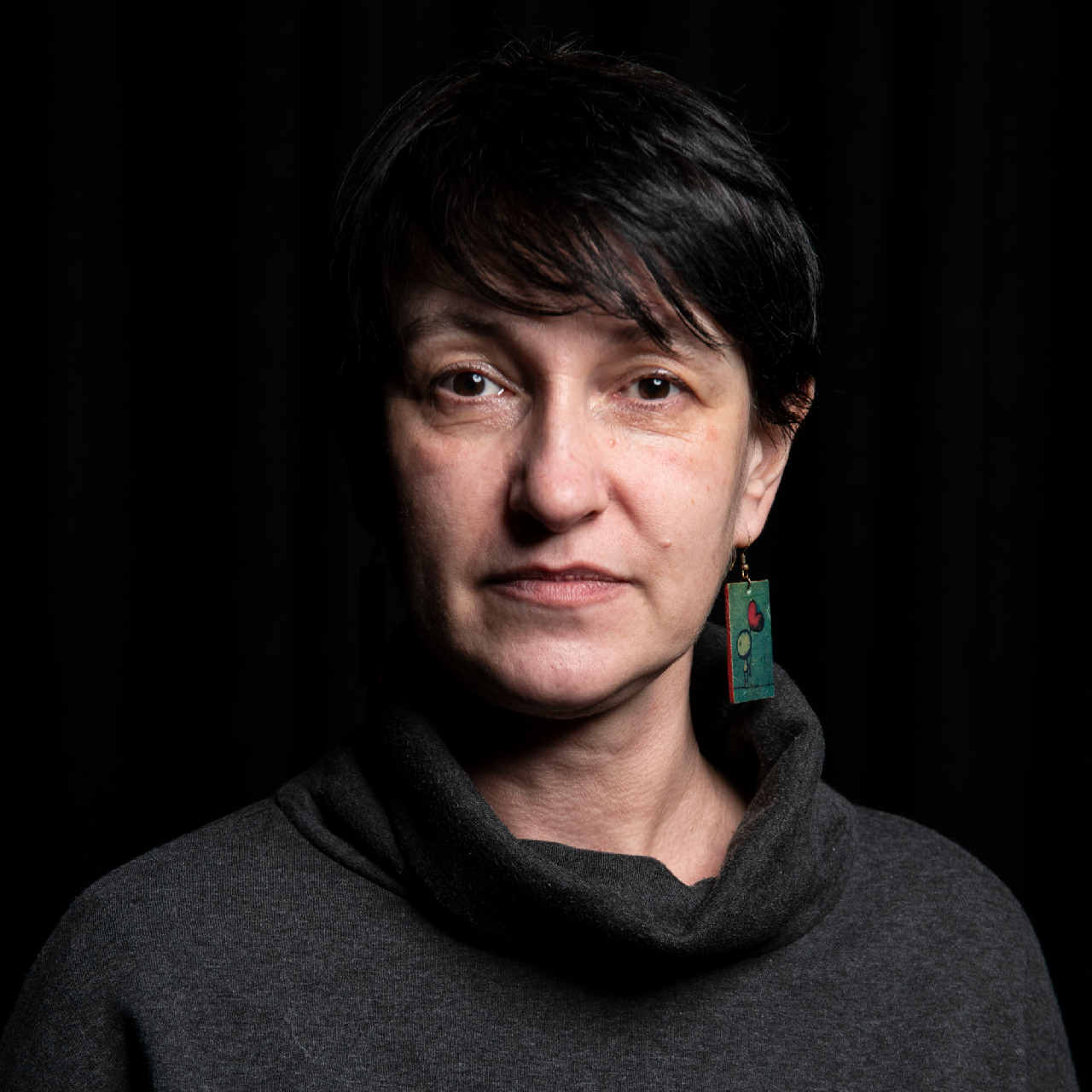In February this year, Sabina Tanović found a group of young men at the bus station in Pljevlja, a small city in the north of Montenegro. After approaching them, she discovered they were refugees from Syria, who had already travelled across Turkey, Greece and Albania on their way toward Bosnia and Herzegovina, and further on, hoping to reach western Europe.
She took them to rest at the house where her organization, Bona Fide, a feminist group from Pljevlja, meets. “Since then until the end of April, 389 persons have found temporary refuge in our house,” Tanović told K2.0. “We give them food, clothes, shoes, a place to rest, medical care… anything we have.”
She adds that so far, the group has worked independently from the state and other international organizations dedicated to helping migrants and refugees in the country. However, after four months of voluntary work, the group is now asking for donations, in order to provide basics such as food. Tanović claims that the number of migrants and refugees in Montenegro is rising, and that she and other activists are expecting a long and difficult summer.
Tanović’s claim is backed up by data on the number of people seeking asylum in Montenegro. According to figures seen by K2.0, 458 requests for asylum were received in the first three months of 2018, more than the entirety that were received in 2016, and more than half of the 849 received last year.
It is likely that hardly any of those seeking asylum will remain in Montenegro, in part due to the state rarely offering protections. In 2017, out of over 800 applications, only seven people were granted protection status, and one received refugee status. So far this year, no requests have received a positive decision.
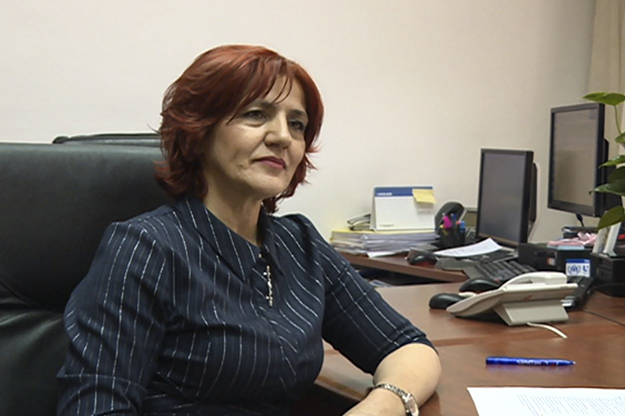
Milanka Baković from Montenegro’s Ministry of Internal Affairs, told K2.0 that accommodating those entering the country since last summer has been a huge challenge. Photo: Mirko Bošković.
Those applying also rarely go through the entire procedure, partly due to a lack of opportunities to escape the poverty they find themselves in, as well as difficult living conditions whilst waiting.
Milanka Baković from the Ministry of Internal Affairs told K2.0 that Montenegro faces a grave challenge in accommodating the people who have been arriving since August last year.
Conditions for accommodating asylum seekers are prescribed by international conventions, but responding to such circumstances has proven difficult for Montenegro in a situation where the inflow of refugees had drastically surpassed the state’s capabilities to adequately settle those people in need of support. According to sources from the Ministry, a camp that is intended to receive refugees is planned to be established near the border with Albania.
Crossing the Balkans
One of those currently being accommodated in Montenegro is Ali, who left Syria three months ago, together with his wife and three children, all minors. They now reside in Spuž, an asylum center in Montenegro that was established in 2015.
Ali told K2.0 how he and his family researched the route they would take before they embarked on the dangerous passage across the Balkans. On their journey to Montenegro, they crossed through four countries, and are committed to continuing their journey in order to reach Germany, where they have cousins.
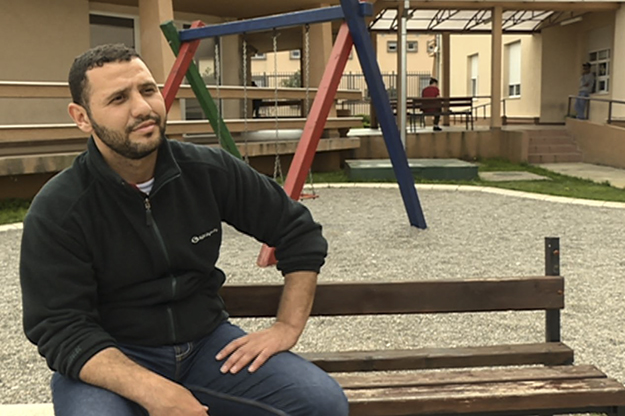
Ali from Syria is traveling with his family toward Germany hoping that they will soon reach a place where they will find refuge. Photo: Mirko Bošković.
“We usually take a taxi to get us across the border,” Ali explains. “After that we walk. When we enter another country, we often call the Red Cross or somebody to help us further so that we could reach a place where we can stay for a few days… We are afraid of what will happen on the road, but we are optimistic that we will reach our goal, with God’s help,” he said.
Ali and his family travelled from Greece through Albania as many others have before him. Some are then smuggled across the border in minivans, with migrants telling K2.0 that the prices for such a service is around 250 euros.
For others, the route leads through mountainous landscapes and hard to reach paths in order to cross the border, before a descent into Montenegro in order to find the road heading to the town of Tuzi. In Tuzi there is a mosque where people who travel in this manner are often allowed to spend the night. Some then attempt to carry on and cross the border into Bosnia and Herzegovina (BiH), while avoiding being registered by the state.
If apprehended by the police during this process, migrants and refugees may seek asylum according to the law, and the Montenegrin state, as with any other state, is obliged to secure conditions for a safe stay until a final decision is made on their request.
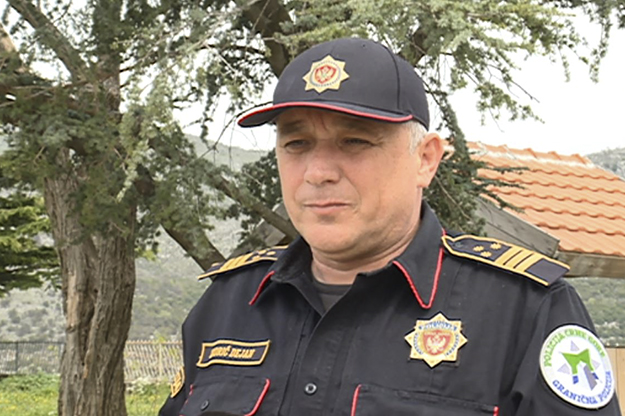
Dejan Andrić from the Montenegro Border police claims that no persons go unregistered in the country. Photo: Mirko Bošković.
Dejan Andrić, head of the Foreigners, Visa, and Countering Illegal Migrations Section of the Border Police, believes that the Montenegrin police have managed to register all those who entered the country. “Those registered are mainly asylum seekers in the Montenegrin territory,” Andrić told K2.0. “They stay here for a couple of days, submit an asylum request, obtain identification documents, and can freely move after that within the country.”
Nevertheless, experts consider it highly unlikely that all people passing through are registered, meaning the exact number of refugees and migrants in Montenegro is hard to establish. The Montenegrin branch of the The UN Refugee Agency (UNHCR) explained to K2.0 that they too rely on official data, but “bearing in mind the migrational trends in the region, it is expected that a certain number of persons went through Montenegro without any registration.”
Pushed back between countries
Z. is from the Middle East and started his journey five years ago. He spent a long time in Greece, but then decided to continue toward northern Europe. For now, Z. also lives in the Asylum Center in Spuž that can receive around 80 persons — with the current numbers, it is far from being able to accomodate all the people currently seeking asylum.

Asylum seekers in Montenegro reside in the center in Spuž, hoping to be able to continue their journey soon. Photo: Mirko Bošković.
Z. has tried to enter both BiH and Croatia from Montenegro, but has been pushed back by the police. These push backs, when border guards turn people back across the border, denying them the right to have their individual cases heard or to challenge their expulsion, are registered all over the Balkans.
According to the Universal Declaration of Human Rights, every person has the right to seek asylum in other countries. In accordance with the Declaration, countries develop instruments to guarantee asylum, with procedures and refugee status determinations left up to each individual state.
However, readmission agreements signed between neighboring states give the possibility to send people back from one country to another. Under the agreements, each country is obliged to register all asylum seekers, and to issue them documents on the basis of which this person can be brought back if caught while crossing the border.
However, Dejan Andrić told K2.0 that many people arriving in Montenegro from Albania do not have any proof of having stayed there. “In some cases we have proof but mostly there is nothing and then we cannot submit a request for returning these persons to Albania,” he said. “Even in cases where we have had some proof that they spent their time in Albania, [Albanian officials] have not positively responded to our request.”
Many of those who experience these push backs while trying to cross over into BiH end up in Spuž, but often in the town’s prison rather than the asylum center.
After refugees are discovered crossing the border, they are brought back to Montenegro as per the readmission agreement. “We process the misdemeanor of that person and notify the Asylum Office that the person tried to illegally cross the border and leave the Montenegrin territory in the course of the ongoing procedure,” Andrić explained.
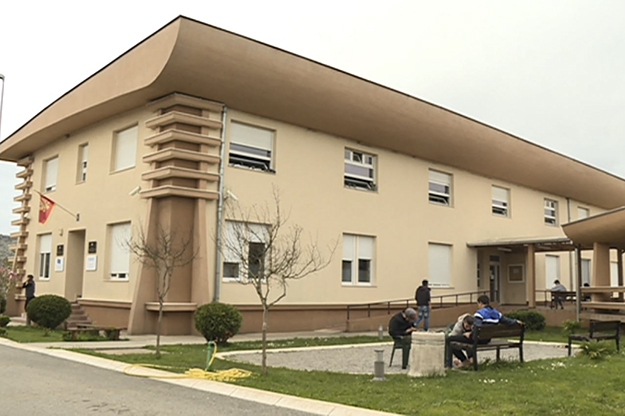
Opposite the Spuž Asylum Center is the prison where, according to people K2.0 talked to, living conditions are appalling. UNHCR says it has not received any complaints. Photo: Mirko Bošković.
According to the law, in this situation Montenegrin authorities are obliged to process them due to the offense of illegally crossing the border. These cases tend to end in a Misdemeanor Court, ordering the minimal fine of around 200 euros. However, most people don’t have the money to pay the fine, which is then transferred to jail time, usually four to five days in Spuž prison, living in very harsh conditions. Speaking to K2.0, a group of Algerians, who found themselves in the prison, revealed that they were provided with neither beds nor sheets.
Despite these and other allegations made by asylum seekers put through the prison system, the UNHCR’s Montenegrin office rejects the allegations of bad treatment. “UNHCR often visits those people [and] invited them [to receive] assistance in submitting an asylum request and never received any complaints from those people regarding their treatment in the facility,” UNHCR told K2.0 in email correspondence. “International law does not encompass an exception from fining people for illegally leaving the country in which they seek asylum.”
Road to Bosnia
Nevertheless, a large number of persons that wish to continue onward manage to cross the border into BiH. The most frequent route they use is located in the western border area on the road from Nikšić to Trebinje.
Between January 1 and March 31 this year, in the area of eastern Herzegovina, Bosnian police found 92 people who had entered the country from Montenegro, while 595 were prevented in their attempts to enter from Bosnia’s southerly neighboring state. Locals from the Montenegrin villages on this route told K2.0 that they have often seen people walking toward the border, especially during winter months, adding that many have sought lodging and shelter from the winter cold in abandoned houses.
The Border Police of BiH told K2.0 that from the start of 2018, among those who have entered this country, there are families from Syria, while in the previous period there were mainly “economic migrants.” They also noticed that the number of women and children has increased.
Migrants and refugees who currently live in Montenegro say that they have unsuccessfully tried to cross the BiH border multiple times, but that they will not give up, because they hope that they have a chance of travelling further into Europe via this route. Farbut Farmani from Iran told K2.0 that his friend attempted to do it five or six times, while he had tried twice.
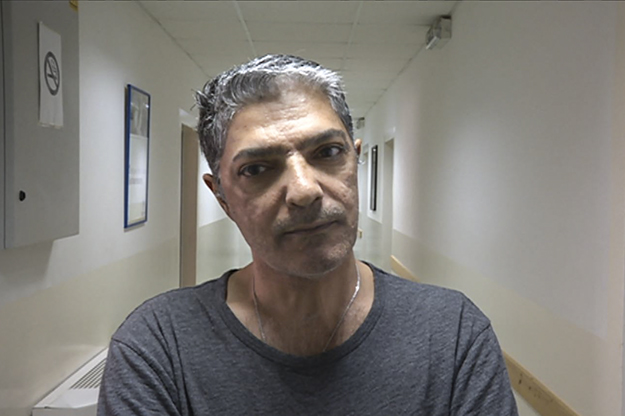
Farbut Farmani from Iran reached Bosnia and Herzegovina, where he says he contacted UNHCR Sarajevo for help. However he was returned to Montenegro by the police. Photo: Mirko Bošković.
“I was even on Bosnian soil, I contacted UNHCR BiH. They told me they would help me. I found myself in very bad health, after I had walked for 55 kilometers, through woods and snow — it was very difficult.” Farmani recounts. “UNHCR Sarajevo promised that they would take care of us and bring us to Sarajevo. Instead of this, the police came and very amicably returned us to Montenegro.”
Some try to cross from Montenegro into Croatia, the first EU country on this route after Greece. Between summer 2017 and the end of April 2018, the Croatian Border Police registered a total of 163 persons who tried to cross the state border from Montenegro, an increase in comparison to the same period in 2016/17, when 128 persons were registered.
Among the people who were stopped, there was a large number of those who are coming from the Middle East and countries affected by war, but there are also many from Albania, Kosovo and a few from Turkey.
Erecting walls
Croatian Border Police claim that they are performing their duties in accordance with the agreement between the governments of Croatia and Montenegro.
However, since last summer, Croatian borders have seen scenes of violence; volunteers have documented violence in the border area between Serbia and Croatia — as they have between Serbia and Hungary — but for now there is nobody monitoring the border between Croatia and Montenegro.
If the Croatian border has already seemingly been tightened, other borders may well be heading in the same direction. In February, Albania signed an agreement with the EU Agency for Border Protection — Frontex — which is due to come into force in June. The agreement foresees the arrival of Frontex police on the borders, in addition to the training and equipping of the local police to more strictly protect the borders. It also provides funds to assist in this aim.
In the meantime, the Hungarian government has announced that it will send Montenegro a spiral wire to cover 25 kilometers of its state border; it still isn’t clear on which part of the border the wire would be erected, but this promise came after the signing of an agreement on border protection between the two countries. According to this contract, Hungary would transport the wire — considered a donation and therefore free from customs and taxes — and engage experts in its establishment.
No future in the Balkans
Among the migrants and refugees K2.0 spoke to in Montenegro, there are almost none who see their future in the Balkans. However, closed EU borders mean that they might have to stay there for at least a while.
If this happens, there are fears that the same fate could be waiting for them as that of refugees from Kosovo who came to Montenegro during the 1999 NATO bombing. While most of the refugees from that period managed to leave Montenegro to either return home or to leave for the West, many Roma, Egyptian and Ashkali people have to this day stayed in Podgorica, living in desperate conditions in Vrela ribnička, nearby the city landfill.
The facilities they live in were built in 2001 and established for a temporary stay of a maximum of two years, but many people have now been there for more than a decade and a half. With this summer likely to see many more people cross the Balkans, preparation and policy are required to prevent anyone else sinking into a similar limbo.K
Edited by Jack Robinson.
Feature image: Mirko Bošković.

